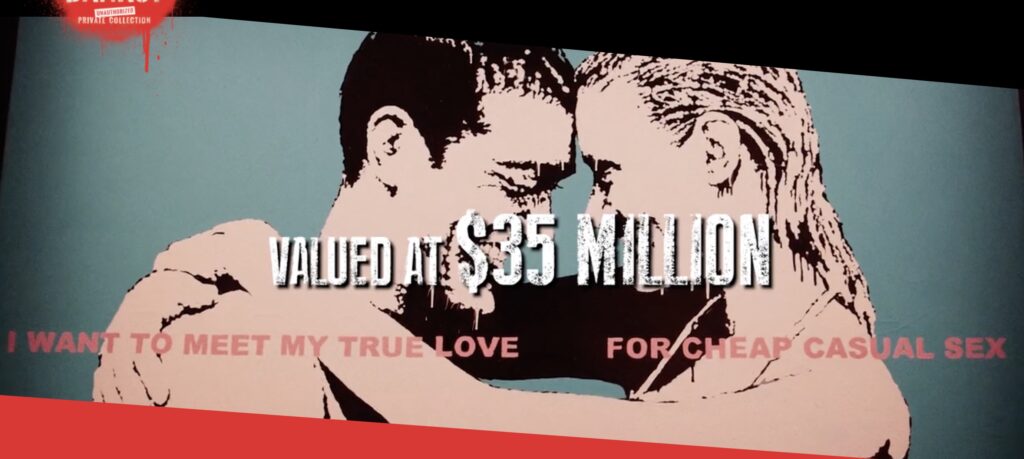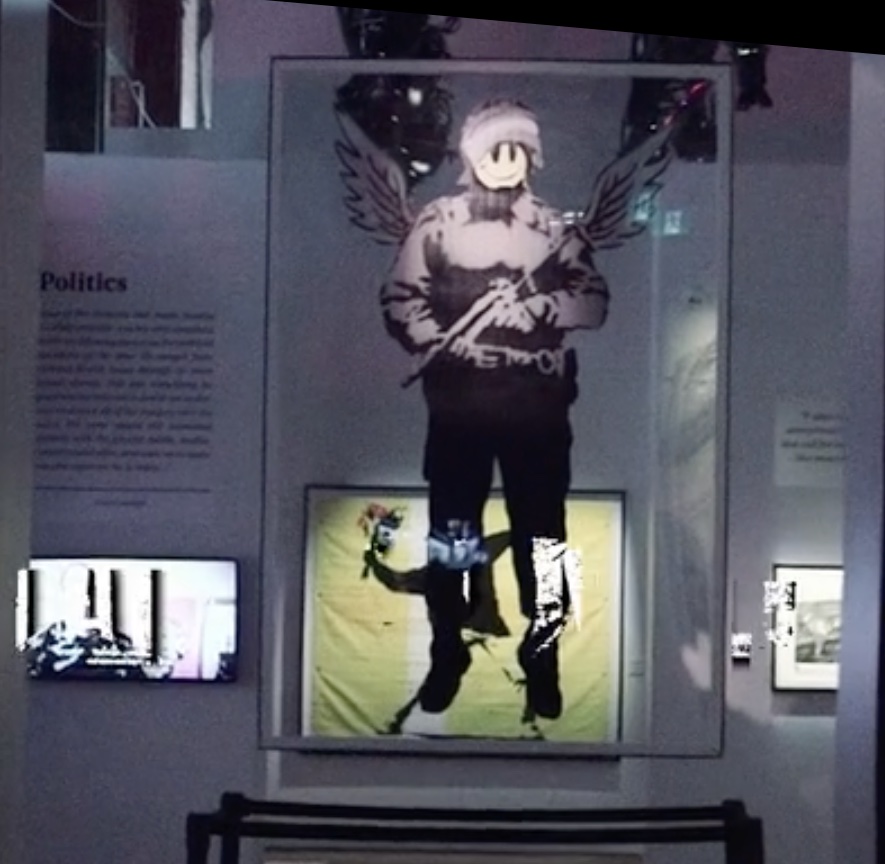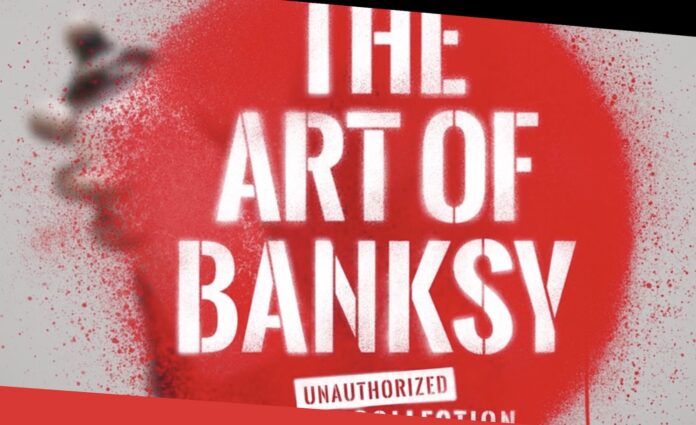Before entering “The Art of Banksy (Unauthorized Private Collection),” one sees the show’s intentions and intended audience. Outside, much of the affluent (and mostly white) crowd didn’t seem to care for things like masking and social distancing. They only adopted the former when they went inside—mind you, they never got the go-ahead to walk in, they just decided it was time. I was one of the few who prepared my ID and vaccine cards.
As I checked my bag and began going through a considerably-more-thorough metal wand check, a couple behind me kvetched about a friend wanting to move from the Bay Area because of “the ridiculous California taxes,” only for said friend to realize those same taxes exist in her intended destination of Los Angeles. The couple cheered upon mentioning that said friend would be joining them for an upcoming trip to Hawai’i. After checking in at the press desk, I went to another where I was given an audio tour guide and was escorted into the exhibit itself.
Both during and after all of the above, I kept thinking, “I wish Banksy would crash this thing.” The exhibit is pure class warfare through capitalist commodification; a chance for the 1% to experience an “edgy” artist whose entire aesthetic is based around how much he despises the 1%. It’s a privately-owned showcase meant to prove that art is just decoration, not personal or political expression.
This is made most clear through the narration of the audio tour guide. In fairness, both the audio guide and text accompanying each piece give historical context to the artist and his work, providing a thorough timeline from his traditional graffiti origins to his current global recognition. But the narration and text are dry descriptions of the work divorced of social-political inspiration and context. Every thing is shown uncensored, but regarded as “just something Banksy did this one time.”

Imagine an exhibit based around MLK in which he was described as “someone well-known who went to Washington one time—he got a great view of the Mall.” Sadly, we don’t have to imagine conservative revisionism of MLK’s true intentions. So too is Banksy here presented, not as the guy who snuck into a Disneyland attraction to protest Guantanamo Bay, but as the guy who did those famous stencils on the sides of buildings.
Which isn’t to say one leaves the exhibit without an appreciation for art and artist. As a longtime admirer, it was intriguing to get within inches of prints of Pulp Fiction (replacing the guns with bananas), several different versions of Girl with Balloon, and a print of Stop and Search. We see an actual copy of his parody of Paris Hilton’s album alongside £10 notes with Princess Di’s face replacing Queen Elizabeth. His album covers for Blur are given the same prominence as his film Exit Through the Gift Shop. Somehow I’d never before seen Banksquiat, his tribute to one of my favorite artists, Jean-Michel Basquiat.
But it’s all pageantry. One piece of text on the wall is a Banksy quote about the necessity of art to make one uncomfortable, yet this show is designed to do the exact opposite: the very ones who should be made uncomfortable by this damning critique of their excess consumerism have merely diluted it into something else to be consumed. If that isn’t made clear during the time it takes you talk through the full exhibit, it definitely will be at the end when you encounter a sign pointing out “Exit and the gift shop.”
There, one can buy as many frowning chimp coffee mugs as one wishes before heading past the VIP section to the bar, where themed cocktails like “The Flower Thrower” and “Kissing Coppers” are sold. It’s also where one picks up a bag of popcorn shaped like the red balloon from the famous piece.

As I left past more unmasked patrons entering for the next viewing, I walked through The Presidio, unable to recall the last time I’d been there at night. I waited for the 45 Stockton, pulled out my earphones, and was struck by the sound of owls in the trees. I was born and raised in The City, but don’t think I’ve seen or heard an owl in the trees outside of the SF Zoo. It was a refreshing moment of being aware of the world in which one inhabits.
As you might guess, I couldn’t help but contrast this with the farce I’d witnessed just minutes earlier. It’s why I spent the entire time wishing the real Banksy would show up, angry as hell and ready to personally destroy this appropriation of his work as easily as he’s destroyed the official copies of his work. But given how even destroyed copies sell for millions, it likely would have made the shown work all the more valuable. Hell, I wouldn’t put it past this show’s creators to “destroy” the work over and over like an animatronic Disney character.
“The Art of Banksy” is exactly what you think it is: shameless pandering to wealthy white consumers who refuse to recognize the damage they’re causing the world, even when they pay to have that damage satirically shown to them. The show is as lacking in self-awareness as it is lacking in art appreciation. If one is desperate to see Banksy works through a morally dubious format, one can just follow the real guy on Instagram.
“The Art of Banksy (Unauthorized Private Collection)” runs though February 27 at the Palace of Fine Arts. More info here.




